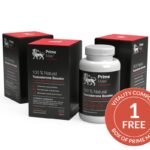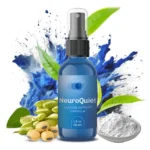The bodybuilding market is flooded with muscle growth supplements leaving many of you with a huge question mark over your head. What to take and when to take it? Can you mix certain things, and how about those who say you can take them at various times? Do we double and triple up or choose the best time to take it?
This article outlines a few optimal ideas for muscle growth supplements choice, and timing. These are not the end-all-be-all rules of supplement intake; nothing is ever that black and white. This is more of a general and simple read to help on a basic level.
A lot of these are personal preferences based on your fitness level and goals. However, bodybuilding is the main goal for this article so let’s focus on the aspect of gaining lean muscle mass and the art of seducing hypertrophy to your advantage in the places we desire utilizing the tools in our arsenal.
Bodybuilding is about sculpting the new muscle mass to our advantage and bending it to our will; the supplement just makes it a “less painful” process; excuse the pun!
You can build muscle on simple foods, but will that be as optimal for you, and how long will this take without the help of some supplementation? The purpose of these items is to boost endurance, strength, recovery, and repair. Think “bigger, stronger, faster, and longer.” Training is so much more intense and hardcore, so our nutrient intake has to keep up with the demand of your body.
Denatured Foods:
Are you really getting everything you need from your foods, even if you buy all organic? Think of the denaturing that occurs with foods from travel once they are picked or boxed. It’s not like you are going to the neighbor or local farm market to get chickens that were live this morning or broccoli just harvested from farmers who use no chemicals.
Well, maybe some of you have that availability, but in reality, most of us are accessing foods with decreased nutrients, and then, depending on how they are cooked, we denature them even more.
Tuna, a mainstay for bodybuilding, is easy, fast, and has great nutritional readings, BUT is so overcooked and has lost so much of its value by the time your body gets to process it. Of course, some of you have limited choices, so it is better than not, but these are all reasons supplementation is so much more needed today for everyone, especially for those seeking natural muscle growth.
Alternately I am not saying that your diet should consist mainly of supplementation, definitely not. You want tons of fresh produce and lean protein with clean carb choices in order to really maximize your muscle growth potential.
Your product selection or cocktail, if you will, should consist of a few “FOR SURE” items. Things like glutamine and EFAs. I put these two first because they count for a lot.
Essential Fatty Acids:
EFAs are taken by competitive bodybuilders, both natural and non, right up to contest day.
This product (EFAs) can come from a few different sources, such as seeds, nuts, and fish. Remember the old “cod liver oil” jokes and fears? I guess it depends on how old you are, but it seems there was something to this whole deal! But if you cannot handle the fish pills or oil which can be taken at meals, I suggest using seed oils within your protein shake.
Many times for muscle growth, if you are not already holding too much body fat, you will want to take a protein blend before and or after your training unless you eat a meal after the workout instead. For larger calorie intakes, you would do both!
Hemp oil is a bit stronger, so I like to use this oil in my shake. It’s very light in taste, so you don’t even taste or feel it. It’s mild enough to take with a spoon if you prefer and can be used over your lean proteins once they are cooked.
EFAs will not only help you with muscle growth but also with fat burning. These are the good calories you need because you are limiting empty calories. So while you are muscle-building, you still need an uptake of 2000+ calories per day for muscle growth and being exact, you can use a calculator. Your protein shake can be the main way to get some of the powders out of the way.
Glutamine:
Glutamine being a recovery supplement, works wonders to limit muscle pains. It is its own joint supplement and promotes synovial fluid in the joints, which is basically our natural joint lubrication.
Glutamine will speed up muscle growth through recovery, and quick recovery also means efficacy in training frequency. 5-20gm per day is the average, but again is very particular to your fitness, weight, sex, etc.
I can use up to 20 gm per day when on-season for Fitness and Figure competing, and I prefer it in my shakes, although it can be downed with water or juice.
Carbohydrates:
If you are not worried about fat loss, you can add some carb powder of choice: milk, peanut butter, juice, frozen fruit, or oat bran to your pre-workout shake.
Creatine:
I like to add creatine and prefer monohydrate, although there are many other choices. I find monohydrate best for me, but many do get cramps or irritated tummies, so test it out, and when any product causes discomfort to try another type or brand as this can make all the difference in the world.
I like to add my creatine before and after my workouts with about 5-10 gm per day as a good avg. to take. I find this really helps to get me through and seems to delay lactic acid. I reiterate that if I am taking some other recovery or booster drinks that some have creatine in them, leaving no need to re-dose.
Pre/Post Workout Shakes
If you are a hardgainer, you can match the pre- and post-workout shakes to be the same in content, but the best idea is to figure out when you feel lightest.
Do you get a down during training or feel it more after? If you get low in training, then you should add some carb to your pre-workout shake. This shake can be your meal or taken with a meal, but to do a meal on its own, you would want to wait after the meal then have the shake pre-workout.
If you have a pre- and post-workout shake and still find yourself getting low in energy during your training, you can get some BCAA: no added crap, no weight gain, just some help to get you through.
For those who do not want or cannot have a full shake pre-workout because of their stomach, or maybe after a workout you need time before eating and cannot take in a shake, you have the option of carb-free pre- and post-workout products.
You use lots of water for these powders, which is perfect since you want to take in lots of water for optimal muscle growth, and the product adds some flavor with the right blend of nutrients, including BCAAS and glutamine.
Now, if you are like me, you would prefer something like creatine and glutamine included for better uptake. You are better able to train and get a nice amazing pump! How could this NOT promote lean mass gains when you feel invincible and can just lift like no tomorrow?
CLA is a fat-burning oil that you take with your meals. This one is now very popular among the competitor industry.
For the boys looking to boost energy levels and support a healthy hormone level, you may want to look into Tribulus. This is also normally taken with meals or first thing in the morning.
Conclusion
Nothing is set in stone, and there are always exceptions, but this is a general guideline to help you organize your supplement intake. You can choose three main ones you like best or try to use a selection of the listed items to find the right combo for your situation and budget.
Many times you will take certain items during a phase of training then switch it up for other stages. Muscle growth is only one phase of training; there is cutting and conditioning as well, so as you move through these phases, keep the supplement intake along with the needs of training being applied. Test items out so you can narrow it down to your key product combo.





